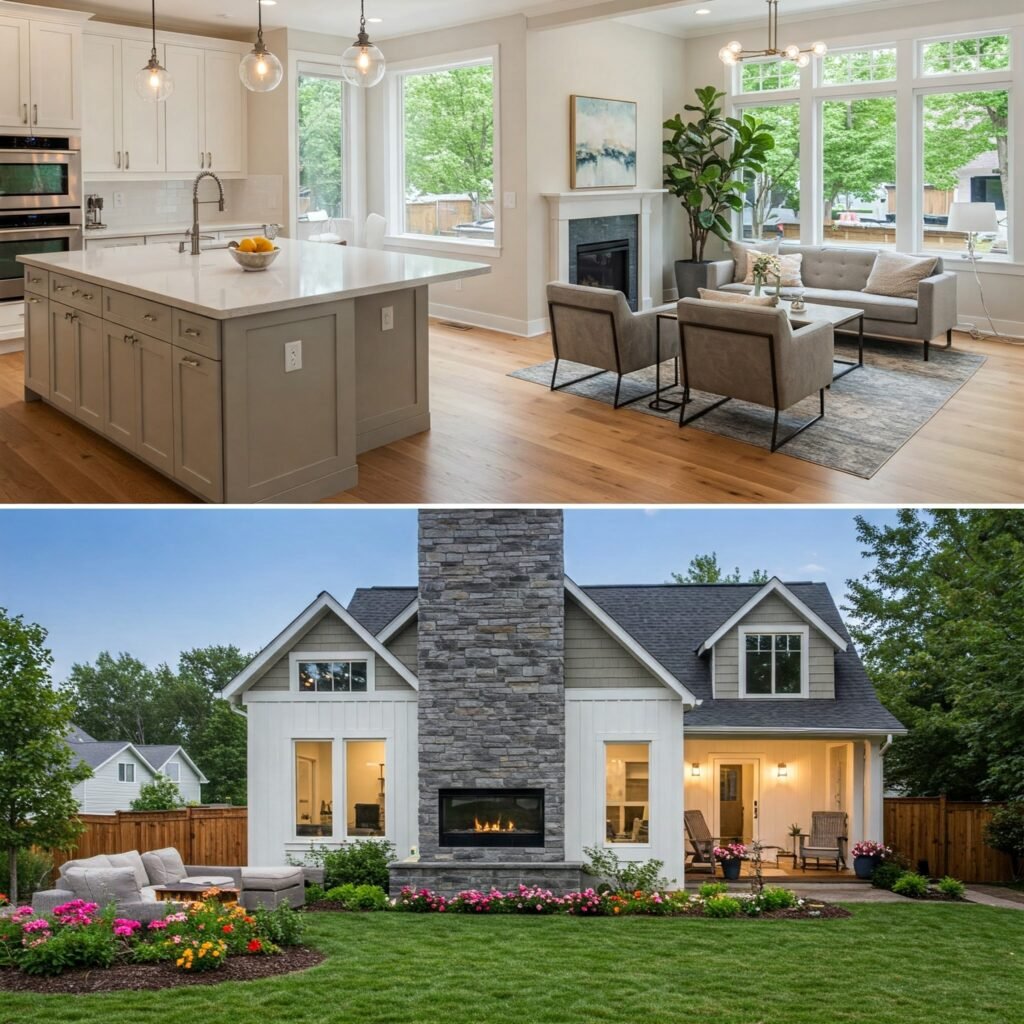A full house remodeling project is one of the most significant investments you can make in your home. Whether you’re looking to modernize an outdated space, improve functionality, or increase property value, a complete renovation requires careful planning and execution.
1. Defining Your Remodeling Goals and Priorities
Before swinging the first hammer, take time to clearly define what you want to achieve. Are you looking to:
- Completely modernize an older home?
- Create an open-concept living space?
- Add square footage through additions?
- Improve energy efficiency and sustainability?
- Update all mechanical systems (plumbing, electrical, HVAC)?
Create separate wish lists for “must-haves” versus “nice-to-haves.” This helps when making budget decisions later. Consider how long you plan to stay in the home – forever homes warrant different investments than properties you might sell in 5-10 years.
2. Establishing a Realistic Budget
Full house remodels typically range from
100,000to
100,000to400,000+ depending on home size, location, and scope. Follow these budgeting best practices:
Cost Breakdown:
- 20-35% for labor
- 15-25% for kitchen (if remodeling)
- 10-15% for bathrooms
- 10% for flooring
- 5-10% for windows/doors
- 15-20% contingency fund
Money-Saving Tips:
- Phase the project over time
- Keep plumbing/electrical in existing locations when possible
- Consider refacing rather than replacing cabinets
- Shop sales for appliances and materials
3. Assembling Your Remodeling Dream Team
The quality of your contractors makes or breaks a full house remodel. Your team may include:
Key Professionals:
- General contractor (licensed, bonded, insured)
- Architect/designer (for structural changes)
- Specialty contractors (electricians, plumbers)
- Interior designer (for finishes and aesthetics)
Vetting Process:
- Check licenses and insurance
- Read reviews on multiple platforms
- Ask for and contact references
- Review portfolios of completed projects
- Get detailed written estimates
4. Navigating Permits and Regulations
Nearly all full remodels require permits. Common requirements include:
- Building permits for structural work
- Electrical/plumbing permits
- HVAC permits
- Zoning approvals (for additions)
Your contractor should handle most permits, but it’s wise to:
- Understand local requirements
- Factor in permit approval timelines (2-8 weeks)
- Budget for permit fees (1-2% of project cost)
5. Creating a Realistic Project Timeline
A typical full house remodel takes 4-12 months. Key phases include:
Pre-Construction (1-3 months):
- Design finalization
- Permit approval
- Material ordering
Construction Phases:
- Demolition (1-2 weeks)
- Structural/framing (2-4 weeks)
- Mechanical rough-ins (2-3 weeks)
- Insulation/drywall (2-3 weeks)
- Finish work (4-8 weeks)
Pro Tip: Plan for temporary living arrangements if the home will be uninhabitable during major phases.

6. Addressing Critical Structural Components
Never skip these foundational elements:
Essential Systems to Evaluate:
- Foundation integrity
- Roof condition
- Load-bearing walls
- Electrical panel/service
- Plumbing supply/drain lines
- HVAC ductwork/system
Red Flags Needing Attention:
- Cracks in foundation
- Sagging rooflines
- Knob-and-tube wiring
- Galvanized plumbing
- Asbestos/mold presence
7. Selecting Materials for Durability and Value
Invest in quality where it matters most:
High-Impact Material Choices:
- Engineered hardwood flooring (more stable than solid)
- Quartz or granite countertops
- Solid wood cabinetry (over particle board)
- Fiber cement siding
- Impact-resistant windows
Areas to Save:
- Backsplash tile
- Bathroom vanities
- Interior doors
- Light fixtures
8. Optimizing Your Home's Layout and Flow
A full remodel presents the perfect opportunity to improve your home’s functionality:
Popular Layout Improvements:
- Opening kitchen to living areas
- Creating a primary suite
- Adding a mudroom entry
- Designing a home office nook
- Incorporating smart storage solutions
Accessibility Considerations:
- Wider doorways (36″)
- Zero-threshold showers
- Lever door handles
- First-floor bedroom potential
9. Incorporating Energy Efficient Solutions
Modern upgrades pay dividends:
Top Efficiency Investments:
- Spray foam insulation
- ENERGY STAR windows
- High-efficiency HVAC
- Tankless water heater
- LED lighting throughout
- Smart thermostats
Rebates and Incentives:
Check for local utility rebates and federal tax credits for energy-efficient upgrades.
10. Adding Personal Style and Finishing Touches
This is where your home truly becomes yours:
Design Elements to Consider:
- Cohesive color palette
- Statement lighting
- Hardware finishes
- Window treatments
- Landscaping continuity
Final Walkthrough Checklist:
✓ Test all systems and appliances
✓ Check paint and finish quality
✓ Verify all contracted work is complete
✓ Confirm cleanup standards are met
✓ Review warranty information
Post-Remodeling Considerations
Maintenance Tips:
- Create a home maintenance schedule
- Keep all warranties and manuals
- Document paint colors and materials
Enjoying Your New Space:
- Host a housewarming party
- Take professional “after” photos
- Consider a professional appraisal to document increased value
A successful full house remodeling project requires hundreds of decisions, but the result – a home perfectly tailored to your needs and tastes – makes the effort worthwhile. By following this comprehensive guide, you’ll navigate the process with confidence, avoiding common pitfalls while creating your dream home. Remember that quality planning leads to quality results, so take your time during each phase to ensure every detail meets your expectations.
